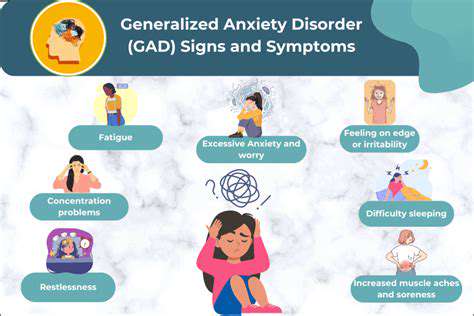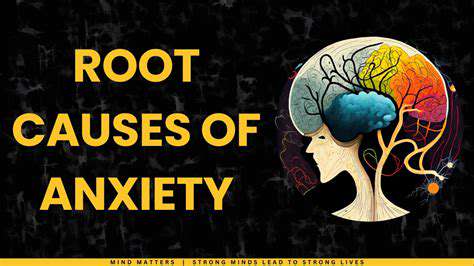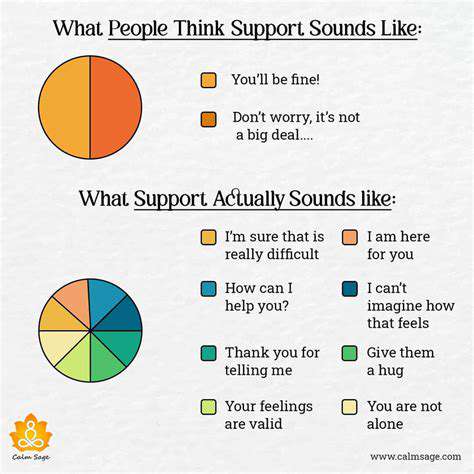Generalized Anxiety Disorder (GAD): Symptoms and Management

Exploring the Root Causes of GAD

Understanding Generalized Anxiety Disorder (GAD)
Living with Generalized Anxiety Disorder (GAD) means facing relentless worry that seeps into every corner of daily existence. These overwhelming concerns frequently disrupt normal functioning, straining personal connections and professional performance alike. Unraveling GAD's origins isn't just academic—it's the foundation for creating personalized healing approaches. This deep dive goes beyond surface symptoms to examine the intricate web of factors that fuel this condition's persistence.
Genetic Predisposition
Scientific investigations repeatedly highlight heredity's powerful role in GAD development. Those with relatives affected by anxiety disorders, especially GAD, face substantially greater odds of experiencing similar challenges. This inherited vulnerability stems from sophisticated gene-environment interactions rather than straightforward genetic destiny. It's about possessing a biological sensitivity that makes certain individuals more reactive to life's stresses.
Neurobiological Factors
The brain's chemical messengers—particularly serotonin and GABA—often function irregularly in GAD cases. When these neurotransmitter systems falter, emotional regulation becomes compromised, amplifying anxiety responses. Such biochemical imbalances create fertile ground for the endless what if scenarios that plague GAD sufferers. Neuroscientists continue mapping these complex neural pathways to better understand their precise contributions.
Environmental Triggers
Life's upheavals—career changes, relationship fractures, financial instability—can ignite or intensify GAD symptoms in susceptible individuals. Childhood trauma leaves particularly deep imprints, with adverse experiences dramatically elevating later anxiety disorder risks. These early hardships can rewire developing brains, establishing hypervigilance that persists into adulthood.
Personality Traits and Cognitive Styles
Certain temperamental tendencies—like perfectionism or excessive cautiousness—serve as anxiety accelerants. People with these characteristics often magnify potential threats while minimizing their coping abilities. This distorted thinking pattern becomes self-perpetuating, trapping individuals in exhausting worry cycles. Modern therapies specifically target these unhelpful mental habits to break their grip.
Early Childhood Experiences
Formative years profoundly shape our stress response systems. Insecure attachments or childhood neglect can establish maladaptive coping strategies that persist decades later. Early emotional deprivation literally rewires neural circuits, creating lifelong anxiety vulnerabilities. These developmental imprints often require targeted therapeutic interventions to reshape.
Learned Behaviors
Anxiety patterns frequently transmit through observation and imitation. Children absorbing caregivers' fearful responses may unconsciously adopt similar reactions. Even without dramatic trauma, chronic low-grade stress exposure can gradually cultivate GAD tendencies. Recognizing these conditioned responses opens doors to relearning healthier coping methods.
Building a Support System for Long-Term Well-being

Understanding the Importance of Support Systems
Creating reliable support structures proves indispensable when facing prolonged challenges—whether professional pressures, health battles, or personal crises. This interpersonal safety net delivers emotional sustenance, tangible help, and crucial belongingness. Its presence or absence often determines resilience levels during difficult periods.
Identifying Your Needs and Resources
Effective support begins with honest self-assessment. What specific assistance would make your burden lighter? Emotional reassurance? Practical task-sharing? Specialized knowledge? Mapping these requirements helps identify potential allies—from intimate friends to professional counselors—who can fill different support roles.
Cultivating Meaningful Relationships
Nurturing authentic connections requires consistent effort and vulnerability. The deepest bonds form through reciprocal sharing, attentive listening, and nonjudgmental presence. Prioritize quality interactions by creating space for heartfelt exchanges and demonstrating genuine care for others' wellbeing too.
Utilizing Support Groups and Communities
Shared experience creates powerful healing connections. Whether in-person or virtual, support groups offer validation from those who truly understand your struggles. These communities provide unique comfort by normalizing challenges and collective problem-solving. Many discover profound relief simply from being heard without explanation.
Seeking Professional Guidance
Specialized mental health support offers tools beyond typical friendship capacities. Therapists provide objective perspectives, evidence-based techniques, and structured progress tracking. Their expertise proves particularly valuable for breaking persistent negative patterns or processing complex emotions.
Enhancing Self-Care Practices
Support systems work best when combined with personal wellbeing investments. Consistent sleep, nutritious eating, physical movement, and mindfulness create emotional reserves. Attending to your fundamental needs first makes you better equipped to both give and receive support. This self-stewardship prevents burnout in challenging seasons.
Maintaining a Balanced Perspective
Constructing reliable support requires patience and flexibility as needs evolve. Remember that sustainable networks develop gradually through mutual trust and shared experiences. Celebrate small connection victories while viewing setbacks as natural growth opportunities rather than failures.
The Importance of Regular Check-ups and Ongoing Care
Understanding the Value of Routine Check-ups
Consistent professional monitoring forms the backbone of effective GAD management. These scheduled touchpoints allow for symptom tracking, treatment evaluation, and timely adjustments. Maintaining this dialogue enables early intervention when needed, preventing minor setbacks from becoming major crises while ensuring care remains tailored to your evolving situation.
These appointments address the whole person—not just anxiety symptoms. Discussing life changes, stress patterns, and emotional fluctuations helps clinicians provide comprehensive support addressing both psychological and physiological aspects of wellbeing.
Monitoring Medication and Therapy Progress
Regular evaluations ensure prescribed medications continue working optimally while minimizing undesirable effects. This ongoing assessment allows precise dosage calibrations and medication changes when necessary. Similarly, consistent therapy sessions permit strategy refinements as treatment progresses, creating space to address emerging challenges or plateaus.
Addressing Potential Co-occurring Conditions
GAD rarely travels alone—depression, OCD, or panic disorders frequently accompany it. Periodic screenings during check-ups help identify these overlapping conditions. This comprehensive approach ensures all contributing factors receive appropriate attention rather than treating GAD in isolation.
Developing Coping Mechanisms and Lifestyle Adjustments
Check-ups provide ideal opportunities to refine personalized coping toolkits. Clinicians can suggest tailored strategies—from breathing techniques to thought restructuring exercises—that align with your unique triggers and preferences. These collaborative sessions often yield practical lifestyle modifications that cumulatively reduce anxiety's grip.
Building a Supportive Relationship with Your Healthcare Team
Consistent care fosters therapeutic alliances built on trust and mutual understanding. This continuity allows providers to deeply comprehend your history and values, while you gain confidence in their expertise. Such relationships become safe harbors when anxiety storms intensify, providing both clinical support and compassionate understanding.